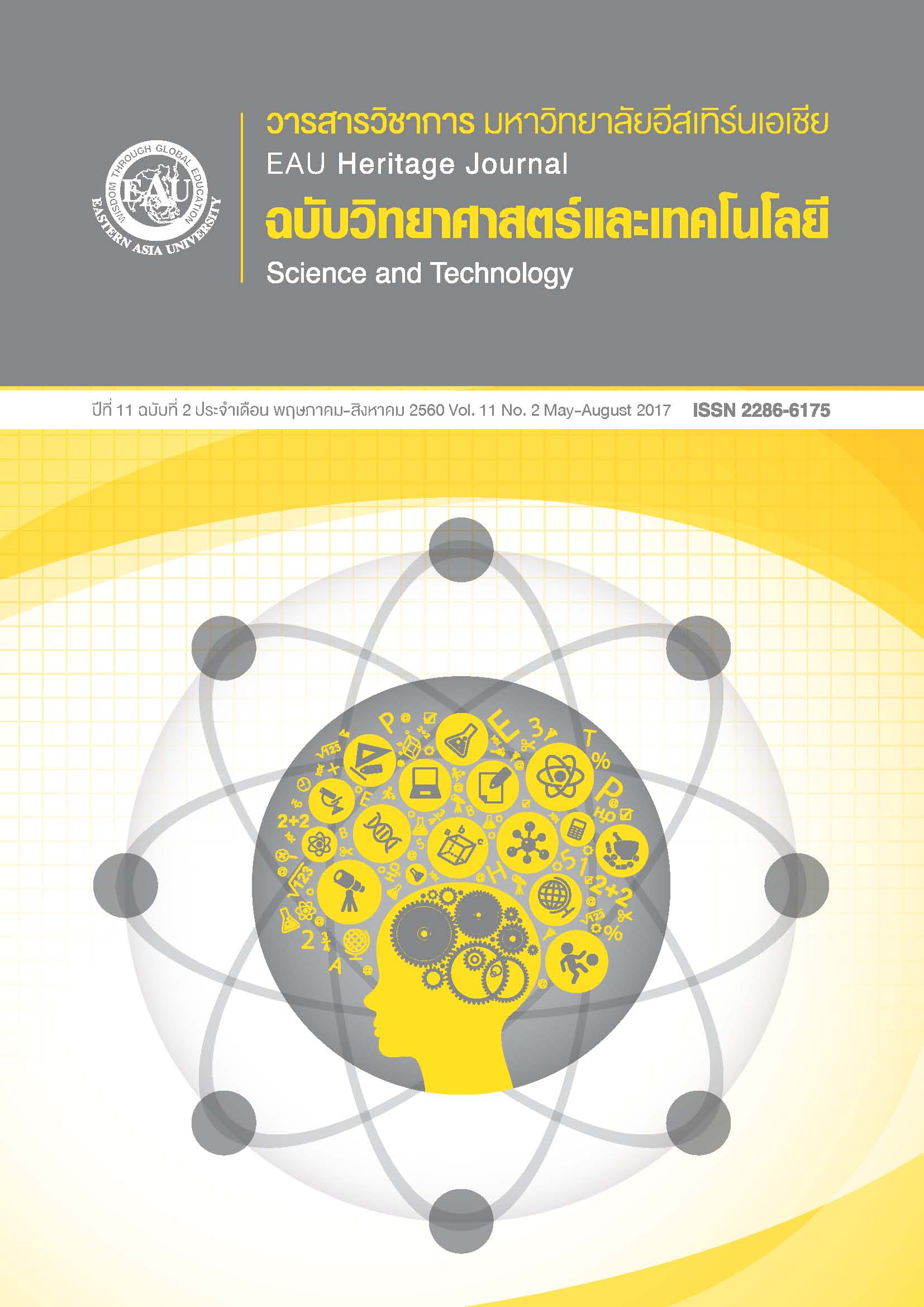Optimization of paraquat degradation by mixed cultures from rhizosphere soil
คำสำคัญ:
paraquat, degradation, mixed cultures, rhizosphere soilบทคัดย่อ
Paraquat is an herbicide widely used for broadleaf weed control. It can resist in environmental and strongly bind to soil particles. That affects on organisms in the soil and agricultural productivity. The aim of this research is to isolate paraquat degrading microorganisms from cassava rhizosphere soils and to evaluate the isolated microorganisms for degradation of paraquat on different conditions. The microorganisms were screened from cassava rhizosphere soils, collected from the field with a history of using herbicide by enrichment technique in lactose broth supplemented with 10 mg/L paraquat. The mixed cultures to degrade paraquat were carried out as a function of different paraquat mineral salt medium (PMS); PSM1 is paraquat using carbon and nitrogen source, PMS2 is paraquat using carbon source and PMS3 is paraquat using nitrogen source. Biodegradation was examined at temperatures of 15, 20, 25, 30, 35, 40 and 45°C and partial degradation was investigated at pH values (5, 6, 7, 8 and 9). The result found that percentage of paraquat degradation by mixed culture in PMS3 (91%) was significant different from PMS1 and PMS2 (p<0.005). It indicated that paraquat was used as nitrogen source for culturing. The effects of different temperatures and pH on the paraquat degradation by the mixed cultures were as well investigated. The highest effect in degradation of paraquat in medium was more than 90% when it was cultivated in PMS3, 30oC at pH 7 during 28 days. In order to screen and isolate microorganisms capable of degrading paraquat, three strains of microorganisms coded as JP1, JP2 and JP3 that can grow on PMS3 agar were obtained by serial dilution spread plate technique. The morphological characteristic of the isolates under microscopy was investigated. JP1 and JP3 was gram positive rod while JP2 was gram negative cocci.Downloads
เผยแพร่แล้ว
2017-08-25
How to Cite
ฉบับ
บท
บทความวิจัย






